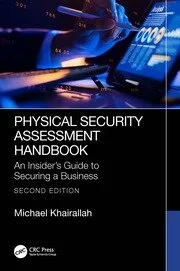‘Communication! Communication! Communication!’: The Most Important Key to Success in Business Leadership

Regardless of whether you’re talking about business, politics, security or the military, the best leaders are first-rate communicators. Their teams admire them and follow their lead, according to Lee Froschheiser.
You hear it all the time: Aspiring managers or vice presidents want to know the most important key to an esteemed business leader’s success. Thinking the answer must be something like inspiring leadership, technological innovation, savvy marketing or far-sighted financial planning – all of which are important – jaws drop when they learn the truth.
Generally, a savvy leader’s success is directly tied to his or her ability to focus on the business fundamentals – the daily blocking and tackling that every company must master to be a winner in its field. Strong, effective leaders stress fundamentals like discipline, accountability, strategic alignment, managing to his or her values and empowering the security team. Additionally, these leaders have mastered the six basic functions of management: leading, planning, organizing, staffing, controlling and communicating. But what one golden thread is tying all those functions together – and the most important key to great leadership? Clear communication.
Think about it. How do the best leaders motivate and inspire their people? Motivation and inspiration comes with clear communication. How do the best organizations promote discipline, accountability and strategic alignment? With clear communication. And how do market leaders sell their products and services? With compelling ads and marketing campaigns – in sum, by clear communication. The point itself is crystal clear: In real estate, the old cliché is “location, location, location.” In business leadership, you preach “communication, communication, communication.”
Good Leaders, Good Communicators
There’s no mystery here. Regardless of whether you’re talking about business, politics, sports or the military, the best leaders are first-rate communicators. Their values are clear and solid, and what they say promotes those values. Their teams admire them and follow their lead. Likewise, if you want your company to reach new benchmarks of achievement, you must master the art of clear communication. So how do you do it?
First, you must realize and accept that clear communication is always a two-way process. It’s not enough to speak clearly; you have to make sure you’re being heard and understood. To facilitate this, use the following two-way communication primer:
1. Prepare how you’ll communicate:
- Clarify the goal of the communication.
- Plan carefully before sending it or meeting in person.
- Anticipate the receiver’s viewpoint and feelings.
2. Deliver the message:
- Express your meaning with conviction.
- Relate the message to your larger goals.
- Identify the action to be taken.
- Confirm the other person understands.
3. Receive the message:
- Keep an open mind.
- Identify key points in the message.
- Value constructive feedback.
- Confirm your understanding.
4. Evaluate the effectiveness of the
communication afterwards.
5. Take corrective action as necessary.
Primers, of course, are not enough. You must go deeper and determine why internal communications are poor or ineffective, considering any potential barriers. Once the barriers have been identified, you’ll see where to improve. Additionally, you’ll inevitably realize the stakes are high when it comes to communicating – if an executive fails to do this properly, he/she can poison the atmosphere between themselves and a colleague, as well as his/her company’s morale. So the next time you draft a letter, e-mail or policy statement, before you send it, stop and consider these common barriers to clear communication:
- Lack of respect by either party for the other.
- Poorly defined purpose for the communication.
- Failure to establish the best medium for the communication (e-mail and cell phone calls are not the best ways to communicate serious material).
- Assumption that the listener receives the message.
- Ignored emotions or sensitivities.
- Failure to get on the listener’s level of understanding.
- Intimidation by either party.
Once the barrier of preventing clear communication at your company is determined, dig even deeper, asking key questions that relate to your business’ health. How do you produce strategic alignment inside your company? How do you get your team to actively buy into your security and business goals? How do you ensure that everyone understands and upholds your company’s mission and values? Again, for each of these issues, the answer lies in clear communication.
In this high-tech, fast-paced world, it’s easy to overlook the value of writing down thoughts, intentions and even visions. Doing so, however, is a basic business strategy that enables clarity and purpose. What’s more, the process of writing a business plan can be more important than the actual document.
Write It Down!
One great way to see just how effective writing it down can be is to always have three updated, clearly drafted documents: a mission statement, a values statement and a business plan. In fact, the document-drafting process naturally produces common understanding, consensus, alignment and buy-in. It also promotes clear communication within your management team while empowering your people and grooming them for future leadership.
Why is this so crucial to a business’ success? statements define who you are and where you’re going. Value statements are your compass, the needle keeping you firmly on course. And your business plan is the rudder steering your ship.
For example, think about Thomas Jefferson and the other framers of the Declaration of Independence and the U.S. Constitution. They drafted documents that not only defined and its mission, but also laid the foundation of ideals, principles, values and laws on which the nation operates to this day. And guess what? They didn’t just sit down one day and dictate it to a secretary. They worked the language and polished every word, over and over, and they used the process itself to promote alignment, consensus and collective buy-in. With words, language and clear communication, they launched a revolution. What’s more, on the shared values of liberty, individual empowerment and collective prosperity, these visionaries built a nation of unparalleled wealth and economic gain.
Communication Is Key
Bottom line, clear communication is the most important key to a security executive’s success. So to grow as a leader and manager, you must learn how to be an effective, compelling communicator. And if you want your company to succeed, you and your team have to master the art of clear communication together as well. By using these and other strategies, you and your security team can reach new levels of leadership excellence.
Looking for a reprint of this article?
From high-res PDFs to custom plaques, order your copy today!





